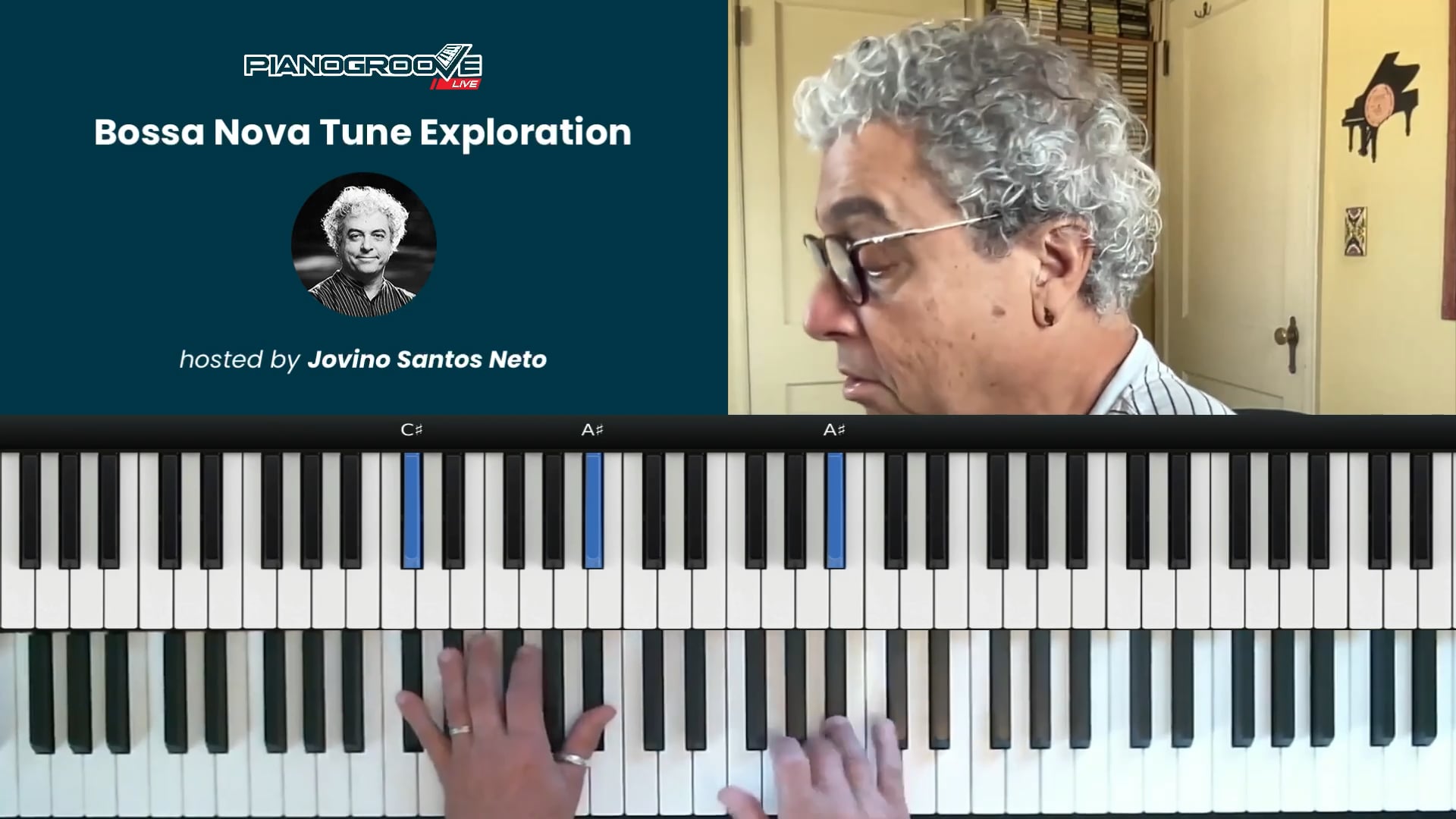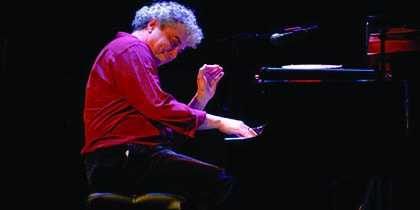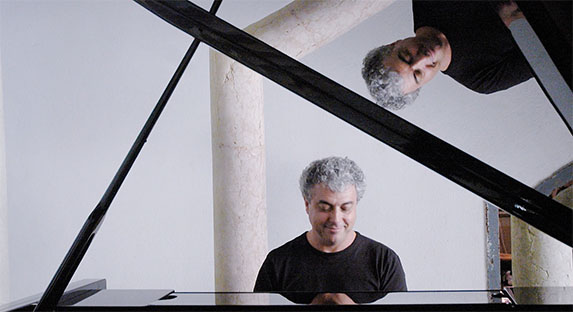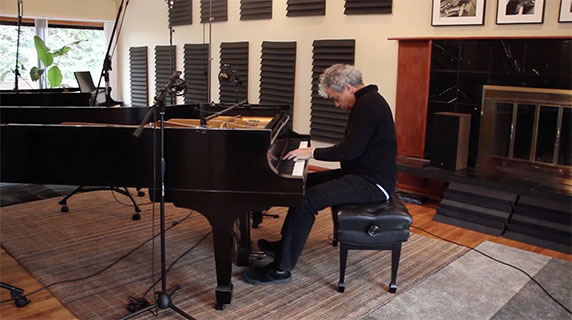

Jovino Santos Neto
Three-time Latin Grammy nominee Jovino Santos Neto, a master pianist, composer and arranger, is among the top Brazilian musicians working today.
Live Seminar Resources
Live Seminar Resources
PDF Downloads
- Feio nao e Bonito
Join PianoGroove Pro to access all downloads and learning resources.
Download theory supplements, midi files, chord changes and full note-for-note transcriptions of every lesson.
- Medo de Amar
Join PianoGroove Pro to access all downloads and learning resources.
Download theory supplements, midi files, chord changes and full note-for-note transcriptions of every lesson.
- Falsa Baiana
Join PianoGroove Pro to access all downloads and learning resources.
Download theory supplements, midi files, chord changes and full note-for-note transcriptions of every lesson.
Related Lessons
Seminar Description
Seminar Description
Exploring Brazilian Harmony & Rhythm: A Deep Dive into Samba & Bossa Nova
Welcome to this seminar exploring the unique harmonic and rhythmic elements of Brazilian music, with a focus on the samba and bossa nova traditions. In this lesson, we analyze the rich harmonic language of composers such as Carlos Lyra and Vinícius de Moraes while examining the defining rhythmic characteristics of this style.
Understanding Brazilian Chord Voicings
A defining characteristic of Brazilian harmony is the frequent use of minor 6th chords. These chords provide a distinctive, lush sound that is widely used in bossa nova and samba. Instead of traditional jazz chord progressions, many Brazilian compositions feature movements that shift between minor 6th chords and their tritone substitutions.
For example, moving from D-6 to Bb-6 creates a rich harmonic landscape that is both sophisticated and deeply expressive. These chord substitutions and variations can be thought of as alternative dominant resolutions, offering more color and fluidity to the harmony.
Rhythmic Syncopation in Samba & Bossa Nova
Another key element of Brazilian music is rhythmic syncopation. In samba, the melodies often incorporate "forked" rhythms—16th note groupings that create a forward-moving, dance-like feel. This phrasing gives the music its signature groove, distinct from jazz swing or classical rhythm.
The syncopated figures common in this style often involve anticipating strong beats and accenting offbeats, which gives the music its unique character. Understanding this rhythmic framework is crucial for any pianist looking to authentically interpret Brazilian music.
Analyzing the Harmonic Structure of Samba Compositions
In our analysis of various pieces, we see how Brazilian composers use chromatic movement and harmonic substitutions to create dynamic progressions. One example is the shift between a dominant 7th chord and its tritone substitution—such as moving from G7 to Db7, which replaces a traditional V7-I cadence with a smoother chromatic transition.
Additionally, diminished passing chords are frequently used to connect movements between tonal centers, as seen in the harmonic transitions of classic samba compositions.
Applying Brazilian Harmony in Jazz Contexts
While samba and bossa nova have their own distinct harmonic language, these techniques can be seamlessly integrated into a jazz setting. Many jazz standards can be reinterpreted using minor 6th voicings and syncopated phrasing, allowing for a more colorful and dynamic approach to chord progressions.
One important takeaway from this lesson is that even though jazz and Brazilian music share many harmonic similarities, the phrasing and feel of the music must be approached differently. By developing an understanding of the rhythmic elasticity of samba, pianists can gain a more authentic and nuanced interpretation of this style.
5 Practice Tips for Mastering Brazilian Harmony & Rhythm
- Experiment with Minor 6th Chords – Practice moving between minor 6th chords and their tritone substitutions to internalize their harmonic function.
- Internalize Syncopated Rhythms – Tap your foot and play along with classic samba recordings to develop a feel for syncopation.
- Use Open Chord Voicings – Brazilian piano voicings often spread harmony across both hands for a fuller sound. Try voicing D-6 in your left hand while playing melodic extensions in your right.
- Incorporate Chromatic Passing Chords – Experiment with using diminished and dominant passing chords to create smooth harmonic motion.
- Develop a Flexible Sense of Timing – Brazilian music often plays with rhythmic elasticity. Practice shifting octaves and phrasing melodies with a sense of push and pull.
By focusing on these core elements—harmony, rhythm, and phrasing—you will develop a deeper appreciation for Brazilian music and expand your jazz vocabulary in exciting new ways. Keep exploring and enjoy the journey!







Hi! I wanted to download the Medo de Amar, but you have uploaded the wrong tune, the link leads to Falsa Baiana…
Hi Fredrik,
Thanks for letting me know about this. I have just fixed the PDF link.
Here is a direct link to the lead sheet: pianogroove.com/media/2023/08/Medo-de-Amar.pdf
I will add the light-up keyboard to the recording asap.
Talk soon, cheers,
Hayden
Thanks so much, Jovino, for these wonderful lessons! I particularly love the Brazilian harmonies and your explanation of the 6th as a common indicator is so helpful in locking in the sounds.
Love your style, mannerisms and the synchopated connection between your comments and the playing of the piece. Kind of a personalized embodiment of what Bossa and Samba is meant to be. Taking all this in as I work with the PDF that Hayden downloaded. As a now retired university based historian for fifty years I also like your historical and social justice insights in your various lessons. Thanks!